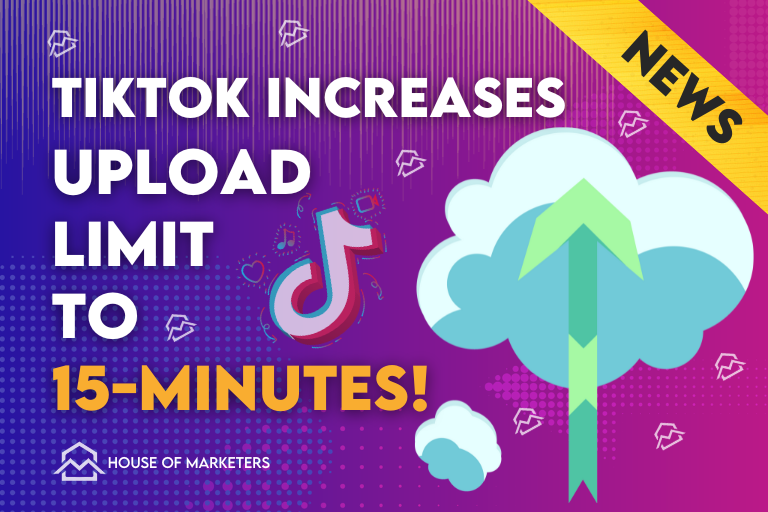
Overview:
- TikTok is testing a 15-minute video upload feature with select users, marking a transition towards long-form content.
- The move aims to foster deeper user engagement, creative storytelling, and enhanced monetisation opportunities.
- This step places TikTok in direct competition with platforms like YouTube, known for long-form content.
- The evolution from 15-second to 15-minute videos showcases TikTok’s ambition to cater to a broader content range.
- The success of this initiative hinges on balancing the platform’s original allure with the needs of a diversified content ecosystem.
In an intriguing turn, TikTok has confirmed to TechCrunch that it’s piloting a feature to let select users upload 15-minute videos, significantly upscaling from its initial 15-second snippet model. This move is seen as TikTok’s progressive step towards embracing long-form content, a domain traditionally dominated by YouTube.
Being a platform celebrated for its micro-content, this development may be TikTok’s strategic attempt to broaden its user base and content diversity.
What Does This Mean?
Understanding the implications of this feature is imperative as it not only alters the current content landscape but also opens new avenues for user engagement, creative storytelling, and brand collaborations on the platform.
- Extended Video Length: The testing phase allows select users to upload videos up to 15 minutes long, a substantial increase from the previous 10-minute limit.
- Broader Content Spectrum: Enables a wider range of content types including detailed tutorials, storytelling, and more.
- Competitive Edge: By embracing long-form content, TikTok is positioning itself to compete with platforms like YouTube.
- Enhanced Monetisation Opportunities: Longer videos could lead to more in-video advertisement opportunities, benefiting both creators and advertisers.
- User Engagement: The change could potentially alter user engagement dynamics, challenging TikTok to maintain its unique quick-content appeal while offering a platform for extended content.
Historical Evolution
TikTok’s inception marked the rise of micro-content, encapsulating engaging narratives within a mere 15 seconds. This quick, captivating content model catapulted TikTok into the social media limelight. However, the platform didn’t settle for this. It gradually increased the video duration limit, first to 60 seconds, then to three minutes, and later to 10 minutes in 2022.
Here’s a timeline to showcase TikTok’s evolution in video length:
2016: TikTok launched as a platform for micro-content, with a maximum video length of 15 seconds. This duration was ideal for quick, catchy, and consumable content which helped in gaining a rapid user base.
Extended to 60 seconds: The date of this extension is unspecified, but it allowed for a bit more storytelling and creativity without straying too far from the micro-content model.
2020 – Extended to 3 minutes in July: This was a significant leap aimed at providing more space for creativity and storytelling. TikTok mentioned that the longer video format was experimented with after feedback from creators and the community who desired more time to engage and entertain the audience1.
2022 – Extended to 10 minutes in February: Another substantial extension to accommodate creators who wanted to share more in-depth content or narratives without feeling rushed. This change was also in response to the evolving user and creator behaviour on the platform.
2023 – Testing 15-minute uploads in October: This testing phase is seen as a move to diversify into the long-form content space, possibly aimed at competing with platforms like YouTube that traditionally host longer videos.
We have seen that each increment was a strategic move to accommodate a broader spectrum of content and creators. Now, the testing of 15-minute video uploads signifies a further shift, aligning TikTok closer to long-form content platforms, thereby redefining its content strategy to foster a more diversified creator and viewer ecosystem.
Each extension in video length over the years represents TikTok’s response to the changing content landscape and the evolving needs and preferences of its user base and creators.
Implications
The transition towards longer video content could potentially reshape the TikTok platform in several ways:
For Creatives and Influencers
The expanded video length gives creators more time and flexibility when sharing content like cooking recipes, beauty tutorials, education content, and comedy sketches. Previously, if a video exceeded 10 minutes, creators would direct viewers to a “Part 2” video. The extended time limit may eliminate the need for a multi-part video series, enabling a more cohesive and enriched viewer experience.
Longer videos could provide more room for in-video advertising, enhancing monetisation opportunities.
For Businesses
Extended video length enables brands to delve deeper into their narratives. More time could foster extensive brand-influencer collaborations.
For Everyday Users
Users may enjoy a broader range of content, from quick clips to longer videos. The user engagement pattern may shift with the introduction of long-form content.
TikTok vs. YouTube: Blurring Lines
The testing of 15-minute videos sets TikTok on a more direct competitive footing with YouTube. This move is indicative of TikTok’s ambition to attract longer-form video creators who traditionally posted content on YouTube. Historically, TikTok was the platform for short-form content, while YouTube was the home for long-form content. However, recent years have seen a blur in the distinctive lines as TikTok embraces longer videos and YouTube ventures into short-form content with ‘Shorts.’
Moreover, TikTok’s testing of a horizontal full-screen mode further encroaches into YouTube’s territory, signalling a robust competitive dynamic unfolding between the two platforms.
Additionally, TikTok is also experimenting with billboard ads, marking yet another venture to diversify its advertising model and potentially boost monetisation.
Conclusion
TikTok’s foray into long-form content signifies a strategic evolution to cater to a diversified content ecosystem. The success of this initiative hinges on balancing the platform’s foundational quick-content charm with the enriched narrative potential of long-form content.
The way TikTok navigates these waters will not only affect its competitive standing but also set a precedent in the ever-evolving digital content landscape.
Stay Up To Date With the Latest News With House of Marketers!
We are a TikTok marketing agency dedicated to helping you stay ahead of the curve in the fast-evolving TikTok landscape. Our expertise ensures you’re always updated with the latest features and trends on TikTok.

House of Marketers (HOM) is a leading TikTok Marketing Agency. Our global agency was built by early TikTok Employees & TikTok Partners, which gives us the insider knowledge to help leading brands, like Redbull, Playtika, Badoo, and HelloFresh win on TikTok. Want us to convert more of Gen Z and Millennials with TikTok? Get in touch with our friendly team, here.